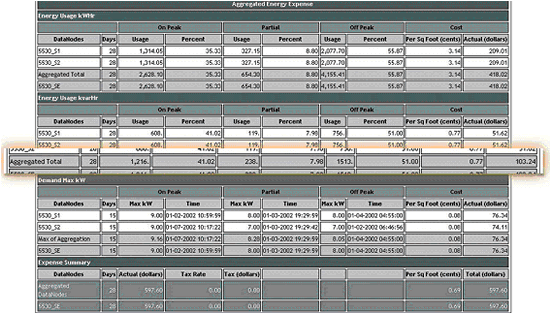A number of recent articles address the key issues in data center design and construction. They point to electric power as the single most important gating item. According to the March 2005 issue of AFCOM’s Communique, data center construction is on the rise, but unlike those centers built around the millennium, today’s data centers require much more electricity. Data centers today are mainly server farms, containing rack after rack of blade and 1U servers, which drive an increased need for energy from 24-40 watts per square foot prior to 2000, to well over 120 watts per square foot today. Assuming these projections are correct, 95% of data centers will need to be updated to meet these power requirements. The following chart, provided by California Data Center Design demonstrates the expected growth:
Projections on Power Use in Data Centers
| Year | Avg. Watt/ft2 | Avg. kW per rack |
|---|---|---|
| 2003 | 40 | 2 |
| 2005 | 80 | 4 |
| 2007 | 240 | 15 |
| 2010 | 500 | 30 |
Estimates of monthly utility bills based on power usage
| Avg. Watt/ft2 | Utility Size | Monthly Costs |
|---|---|---|
| 40 | 4 megawatts | $288,000 |
| 80 | 8 megawatts | $576,000 |
| 240 | 24 megawatts | $1,728,000 |
| 500 | 50 megawatts | $3,600,000 |
The author informs readers that when specifying designs of 120 watts per square foot or more, the location of the facility is pivotal to success as not every utility can reliably deliver the required power on a 7x24x364 basis. As a result, more emphasis is placed on backup power and power monitoring. Backup power options are getting tougher as environmental restrictions are tightened, pointing to new technologies such as fuel cells, microturbines and flywheels. And as Dranetz’s hundreds of data center customers will tell you, continuous power monitoring is a must for any facility, worldwide.
A second article appearing in Processor magazine talks about the challenges of converting existing office space into a modern data center. As in the aforementioned article, electric power is seen as the most important factor in the design, with data center managers urged to analyze potential locations to make sure they can handle the hundred(s) of watts per square foot required. Separate and independent electric and HVAC infrastructures are recommended.
Dranetz’s Encore Series System provides unquestionable support to data center managers, for:
- Continuous power quality and energy monitoring of utility feeds, key equipment and critical loads to maximize uptime.
- Trending and alerting of power quality events that might be eroding data center performance.
- Performance testing of mitigation equipment, such as UPS and backup generators.
- Load testing for adding new equipment such as HVAC and servers to determine how much and where to add new loads.
- Electric consumption across the facility and within departments or rooms to improve energy efficiency and reduce cost.



